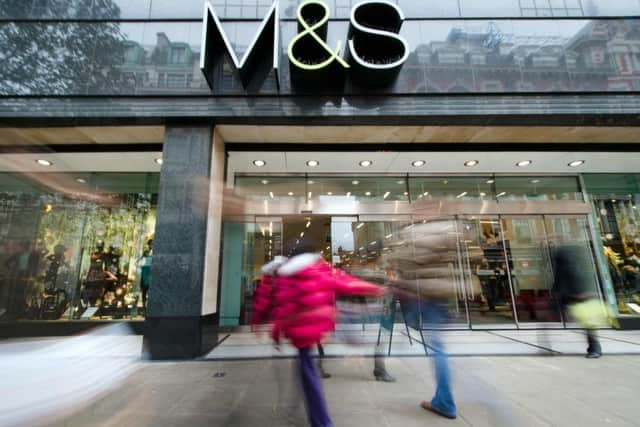Comment: Marks & Spencer gambling on fewer, better stores in latest reinvention
Never mind the Middle Britain retail icon normally makes a tidy £500 million to £600m profit a year, although annual results today are expected to show a 6 per cent fall in earnings to about “just” £570m. For the unforgiving City, it somehow pales beside that magical lost figure of £1bn. It is like the hoi-polloi looking down on a stately dowager because although she now just has a stunning mansion and stables of horses, she once had affluent households on the Riviera and in New York as well.
An accelerating store closure programme is now the name of the game, with the announcement yesterday the axe is to fall on more than 100 M&S outlets, including Falkirk and East Kilbride, by 2022. When you see M&S quitting both London’s affluent Bayswater district and the English capital’s altogether more utilitarian Holloway Road, you know the malaise runs deep.


Advertisement
Hide AdAdvertisement
Hide AdM&S has not been immune from the migration to online shopping and is now trying to play serious catch-up. Chief executives have come and gone, each trying their best to streamline M&S to recovery.
Like many other retailers in these tough high street times, M&S seems to be gambling on having fewer, better stores that customers will either be prepared to drive a bit farther to or they will migrate to online shopping.
If you can’t beat ’em, join ‘em. CEO Steve Rowe must also be feeling the heat from newish M&S chairman Archie Norman at his back.
One of the company’s chronic problems has been its core women’s clothing arm – how to make it stylish and fashionable without driving away its more senior female demographic.
There was a lengthy period of falling same-floorspace sales – a key, if sometimes inexplicable, City metric – in women’s clothing. That was often offset by resilient performances from M&S’s food arm, but even that has come off the boil recently.
M&S is responding with the classic “efficiencies” programme that also sees distribution centres cut back and many hundreds of jobs lost. One consolation is that while the group has not been on the front foot for the best part of a decade, its brand retains a tenacious hold on Britain’s conservative shopping habit.
